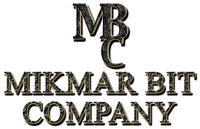Pelham Bits
A Pelham bit is one of the more complex English bits, but as you’ll see in a moment, it can be extremely useful. A Pelham bit combines the functions of both a snaffle and a curb bit, and works with two sets of reins—one commanding each function.
The snaffle rein position, which is the upper ring, provides direct pressure, aids in lateral flexion and lifts the horses frame. The curb is the lower rein position, it aids in vertical flexion and activates the curb chain, providing leverage when needed and a more collected carriage and headset.
Why Do People Want Both?
The advantage to a Pelham bit is that it gives the rider the ability to use both a snaffle rein and curb rein simultaneously with one bit instead of a double bridle set up which uses both Bradoon and Weymouth bits together at once. When using the Pelham bit typically the snaffle rein is utilized as the main rein and the curb rein is added for more control when needed. This bit requires that you be skilled so it does take some practice to learn to use it correctly. Once educated it is a wonderful tool of communication.
The Mikmar Pelhams
The Mikmar Pelhams combine classic cheek pieces made of high quality stainless steel, and lightweight mouthpieces made of Mikmars special alloy, giving you the perfect Pelham. There are two cheek lengths, four or five inches and four mouthpieces to choose from, solid/straight, slanted/straight, jointed and jointed/slanted. Each Mikmar Pelham provides the rider superior communication and the ability to finesse the ride being soft or firm at any given moment. It is a favorite English horse bit that's not only stylish but effective for both the show ring and training. Popular for Equitation, both Show and Field Hunters, and Jumper riders.

